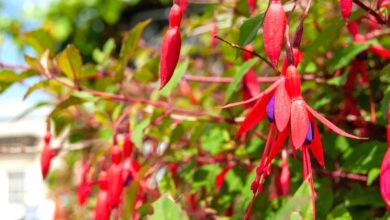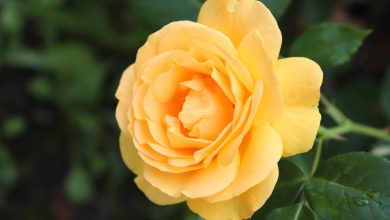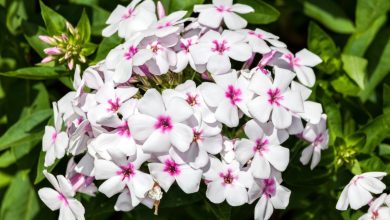The Secret to Growing Sweet Peas in Your Garden

Growing sweet peas in your garden is a rewarding experience that can bring you beautiful blooms and delicious, fragrant vegetables. Sweet peas are easy to grow and require minimal maintenance, making them a great choice for gardeners of all levels. With the right care and attention, you can enjoy a bounty of sweet peas in your garden. In this guide, we’ll discuss the secret to growing sweet peas in your garden, including tips on planting, watering, and fertilizing. We’ll also provide some advice on how to prevent common pests and diseases from affecting your sweet pea plants. With the right knowledge and care, you can have a successful sweet pea harvest in no time.
Selecting the Right Variety of Sweet Pea for Your Garden
When it comes to selecting the right variety of sweet pea for your garden, there are a few important things to consider. Sweet peas are a beautiful, fragrant flower that can bring a lovely splash of color to any garden. With so many, it can be difficult to which one is best for garden. Here are some tips to help you the right variety of sweeta for your garden.
First, consider the climate your area. Sweet peas best grown in cooler climates, so if you live in a climate, you may want to choose a variety that is more tolerant of heat. Some varieties are more tolerant of drought, so if you live in an area with dry summers, you may want to choose one of these varieties.
Next, consider the amount of sunlight your garden receives. Sweet peas need at least six hours of sunlight per day to thrive, so if your garden is in a shady area, you may want to choose a variety that is more tolerant of shade.
You also need to consider the size of your garden. Some varieties of sweet pea can grow quite large, so if you have a small garden, you may want to a variety that is more.
Finally, consider the color of the sweet pea you want to grow. Sweet peas come in a variety of colors, including white, pink, purple, and red. Choose a color that will complement the other flowers in your garden.
Once you have considered all of these factors, you can begin to narrow down your choices and select the right variety of sweet pea for your garden. Sweet peas are a beautiful addition to any garden, and with the right variety, you can enjoy their beauty and fragrance for years to come.
Preparing the Soil for Planting Sweet Peas
Preparing the soil for planting sweet peas is an important step in ensuring a successful crop. Sweet peas require well-drained, nutrient-rich soil with a pH between 6.0 and 7.0. It is best to begin preparing the soil in the fall, as sweet peas need a long growing season and benefit from a winter of soil preparation.
The first step is to test the soil to determine its pH and nutrient levels. This can be done with a soil test kit, which can be purchased at any garden center. Once the soil has been tested, it can be amended to meet the needs of the sweet peas. If the soil is too acidic, lime can be added to raise the pH. If the soil is too alkaline, sulfur can be added to lower the pH. To add nutrients, compost or manure can be mixed into the soil.
Once the soil has been amended, it is important to till it to a depth of at least 12 inches. This will help to loosen the soil and allow for better root growth. After tilling, the soil should be raked to remove any large clumps and stones.
Once the soil is ready, it is time to plant the sweet peas. Sweet peas should be planted in early spring, when the soil is still cool. Plant the seeds 1 inch deep and 4 inches apart. Water the seeds thoroughly after planting and keep the soil moist until the seeds germinate.
By following these steps, you can ensure that your sweet peas will have the best possible start. With the right soil preparation, you can look forward to a bountiful harvest of sweet peas.
Planting and Caring for Sweet Peas
Planting and caring for sweet peas is a rewarding experience for any gardener. Sweet peas are a type of flowering plant that is native to the Mediterranean region and is part of the legume family. They are a popular choice for gardens due to their colorful, fragrant blooms and the fact that they are easy to grow.
When planting sweet peas, it is important to choose a location that gets plenty of sunlight. Sweet peas need at least six hours of direct sunlight each day in order to thrive. The soil should be well-draining and rich in organic matter. Before planting, mix in some compost or aged manure to help the soil retain moisture and nutrients.
When planting sweet peas, it is important to space them out so that they have plenty of room to grow. Plant the seeds about one inch deep and two to three inches apart. Water the soil thoroughly after planting and keep it moist until the seeds germinate.
Once the sweet peas have germinated, they will need to be thinned out. This means removing some of the seedlings so that the remaining plants have enough room to grow. The plants should be thinned to about six inches apart.
Sweet peas will need to be watered regularly in order to keep the soil moist. They should be watered deeply and evenly throughout the growing season. During periods of drought, the plants may need to be watered more frequently.
Fertilizing sweet peas is also important for optimal growth. A balanced fertilizer should be applied every two to three weeks during the growing season.
To encourage more blooms, it is important to deadhead the flowers regularly. This means removing the spent blooms to encourage new ones to form.
In addition to regular watering and fertilizing, sweet peas will need to be supported as they grow. Stakes or trellises should be placed around the plants to provide support. This will help keep the plants upright and prevent them from falling over.
Finally, sweet peas are susceptible to pests and diseases. Regularly inspect the plants for signs of damage and take steps to control any pests or diseases that may be present.
Planting and caring for sweet peas is a rewarding experience for any gardener. With the right location, soil, and care, sweet peas can provide beautiful, fragrant blooms for many years to come.
Controlling Pests and Diseases in Sweet Pea Gardens
Controlling pests and diseases in sweet pea gardens is essential for a successful harvest. Sweet peas are a popular garden plant, known for their beautiful flowers and fragrant scent. Unfortunately, they are also susceptible to a variety of pests and diseases that can cause significant damage to the plants and reduce yields. Fortunately, there are several strategies that can be used to control these pests and diseases and ensure a healthy and productive sweet pea garden.
One of the most effective ways to control pests and diseases in sweet pea gardens is through preventive measures. This includes choosing varieties that are resistant to common pests and diseases, as well as avoiding overcrowding and providing adequate spacing between plants. Additionally, it is important to practice good sanitation, such as removing and disposing of diseased plants and debris, and avoiding over-fertilizing.
In addition to preventive measures, it is also important to monitor the garden for signs of pests and diseases. Early detection is key to successful control, as it allows for quick and effective treatment. Common signs of pests and diseases include discolored or wilted leaves, yellowing foliage, and stunted growth. If any of these signs are observed, it is important to take action immediately to prevent further damage.
Once pests and diseases have been identified, there are several strategies that can be used to control them. For example, physical removal of pests, such as hand-picking or using a vacuum, can be effective. Additionally, biological control methods, such as introducing beneficial insects, can be used to control pests. Chemical control methods, such as insecticides and fungicides, can also be used, but should be used with caution and only when necessary.
By following these strategies, gardeners can successfully control pests and diseases in sweet pea gardens and ensure a healthy and productive harvest. With proper care and maintenance, sweet peas can be a beautiful and fragrant addition to any garden.
Harvesting and Storing Sweet Peas
Harvesting and storing sweet peas is an important part of the gardening process. Sweet peas are a popular garden flower that can be grown in many climates. They come in a variety of colors and sizes, making them a great addition to any garden.
When harvesting sweet peas, it is important to wait until the pods are dry and the peas are fully mature. If the pods are still green, the peas will not be as sweet. To harvest, simply cut the stem with a pair of scissors or garden shears. Once the stem is cut, the pods can be removed and the peas can be collected.
When storing sweet peas, it is important to keep them dry and cool. The best way to store them is in an airtight container in the refrigerator. This will help keep them fresh and prevent them from spoiling. If you plan to freeze the peas, make sure to blanch them first to preserve their flavor and texture.
Once the sweet peas are harvested and stored, they can be used in a variety of dishes. They can be added to salads, soups, and stews, or they can be cooked and served as a side dish. Sweet peas can also be used to make jams and jellies, or even added to baked goods for a sweet flavor.
Harvesting and storing sweet peas is an important part of the gardening process. With the right care and storage, sweet peas can be enjoyed for months to come.
Growing sweet peas in your garden is a rewarding experience that can be enjoyed by gardeners of all levels. Sweet peas are easy to grow and require minimal care, making them a great choice for novice gardeners. To ensure success, make sure to plant your sweet peas in a sunny location, provide them with plenty of water, and use a trellis or other support structure to keep them upright. With a little bit of care and attention, you can enjoy the sweet scent and beautiful blooms of sweet peas in your garden.
Excerpt
Sweet peas are a fragrant and colorful addition to any garden. To ensure success, plant in well-drained soil in full sun. Soak seeds overnight before planting and space them two inches apart. Provide support for the vines and keep the soil moist. With a little care, you’ll be rewarded with a bountiful harvest of sweet peas.



